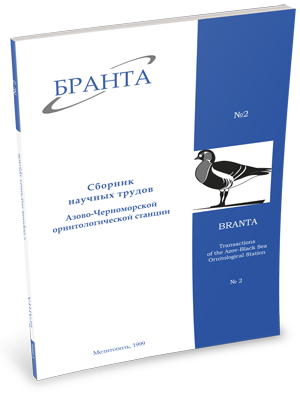
Transactions
of the Azov-Black Sea Ornithological Station



Great Bustard, Little Bustard and Stone Curlew in the South of the Left-Bank Ukraine: current population state
Andryushchenko Yu.A, Stadnichenko I.S.
During the breeding period numbers of Great Bustards (Otis tarda) in the South of the Left-Bank Ukraine lay in the range of 430-580 individuals. There are 108-120 breeding females and 322-450 non-breeding birds on this territory. Most Great Bustards inhabit Kerch peninsula, Northwest Crimea, the Sivash and Priasovs'ka heights. About 7,000 – 8,000 Great Bustards winter in the southern parts of the Kherson, Zaporizhzhia regions and in the Steppe Crimea. Nesting Little Bustards (Tetrax tetrax) were found only in the northern part of Kerch peninsula, where 35-70 individuals were counted in different years. Single birds were also observed in the south of the peninsula, some of them were wintering. Total number of Little Bustards, probably, does not exceed 100-110 individuals. Stone Curlews (Burhinus oedicnemus) are nesting on the whole territory. Their breeding density is higher along the coasts of large water reservoirs, though birds are numerous far away from them as well. In some areas breeding density of Stone Curlews varies in the range of 1 pair per 1.4-2.5 km2.
Most important habitat characteristics for Great Bustards, Little Bustards and Stone Curlews are the following: relief that provides secluded places for birds and gives a possibility to survey surrounding territory-; vegetation that allows to hide but does not prevent adults and fledglings from moving over the breeding area. All mentioned species prefer thin grass, but they choose different height of vegetation: Stone Curlews prefer low grass or sites without it, Little Bustards – low grass or vegetation of middle height. Great Bustards – vegetation of middle height or high grass. Species composition of the vegetation on the nest site is not very important for nesting birds. Nests of Great Bustard were often situated on fields (70.9%) as well as those of Stone Curlew (52.6%). In the latter case also pastures, salt- marshes or rocky lands were used as breeding habitats. Little Bustards nests were found mainly on virgin lands, which sometimes were grazed.
Read the paper in a PDF file